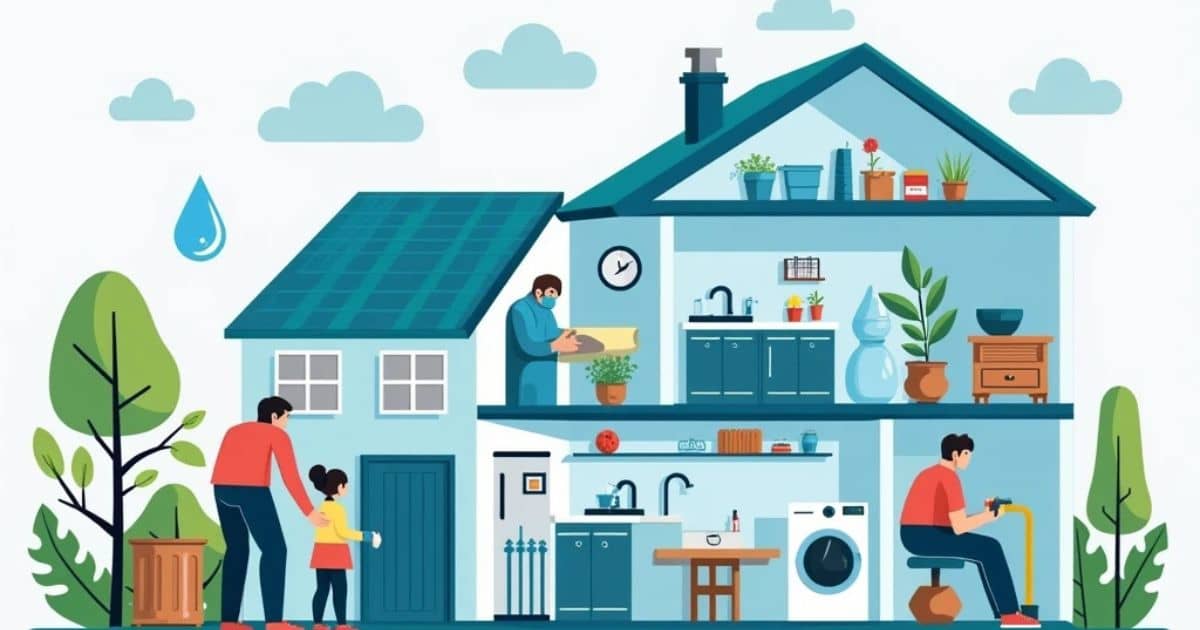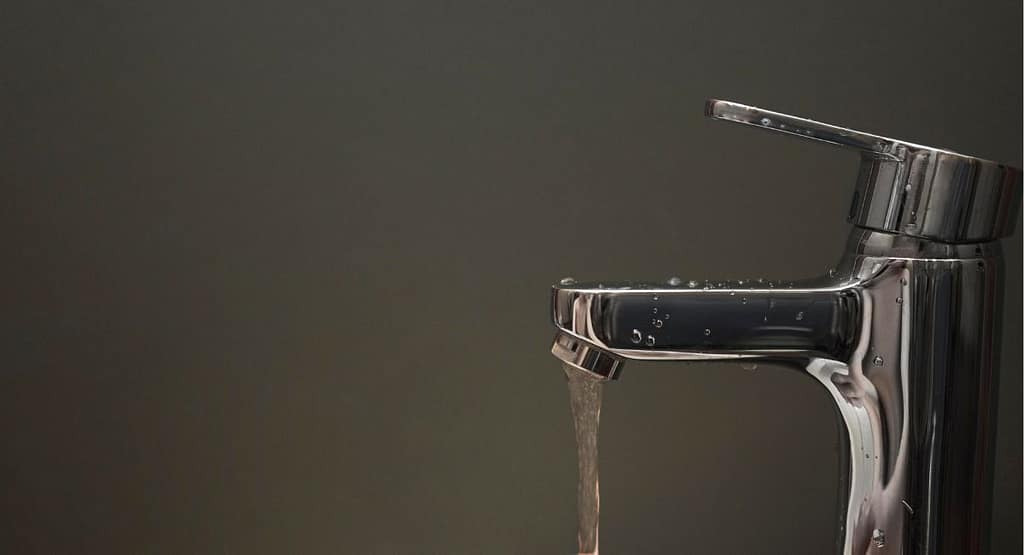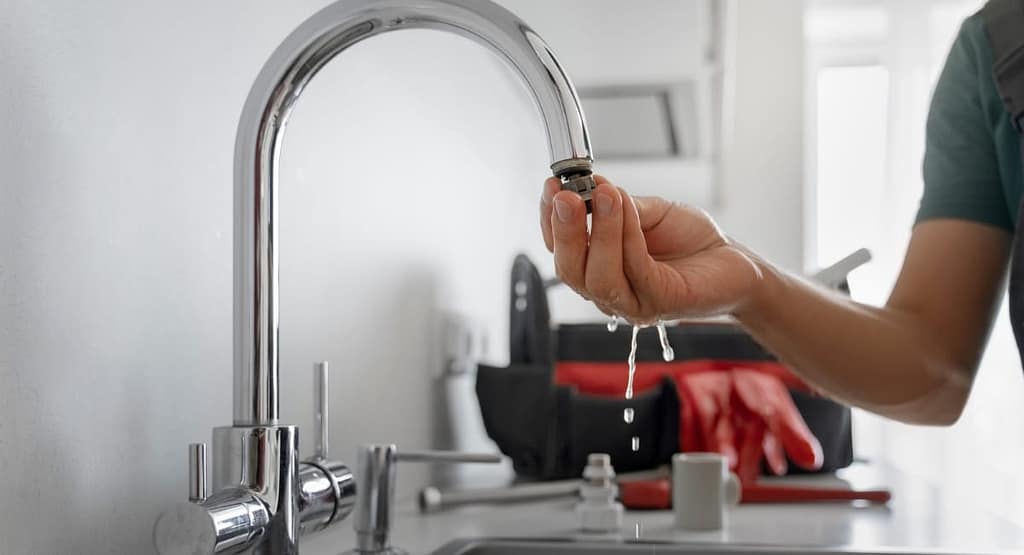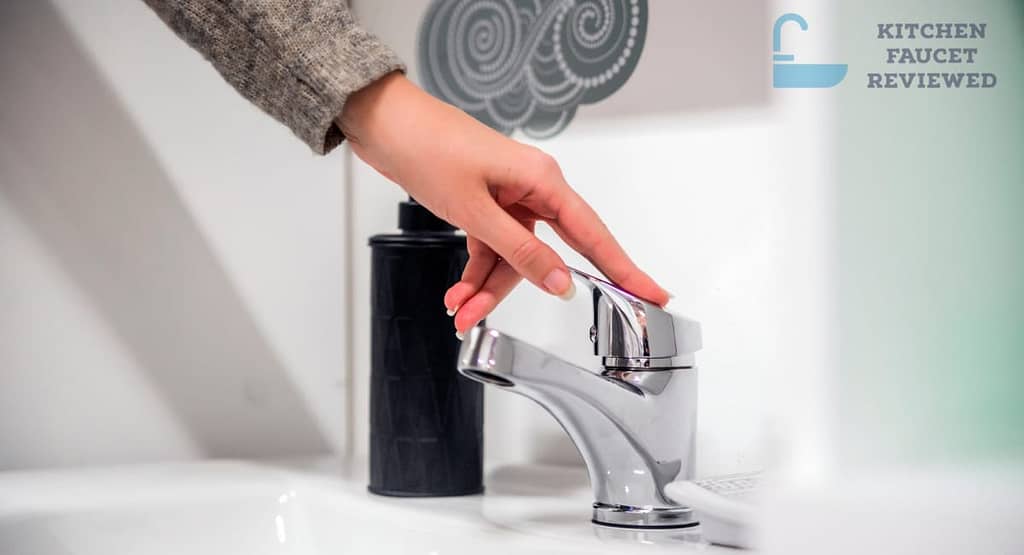Water is a vital resource essential for life, and as the global population grows, so does the demand for water. With increasing concerns about water scarcity and rising water bills, it has become crucial for individuals to adopt water-saving practices.
Not only will these strategies help you reduce your water bill, but they will also contribute to water conservation, benefiting the environment and future generations.
In this blog post, we will explore various effective and well-researched methods to save water and lower your water bill.
How to Save Water Bill in Your Home?
1: Fix Leaks and Drips
Water leaks and drips may seem insignificant at first glance, but their cumulative impact on water wastage and your water bill can be substantial. Here’s a deeper look into the importance of fixing leaks and drips and how to go about it:
The Scale of the Problem:
Even a small, slow drip from a faucet can waste a surprising amount of water over time. For instance, a faucet dripping at one drop per second can lead to the loss of over 3,000 gallons of water in a year. Likewise, a leaky toilet can waste up to 200 gallons of water per day. When you consider the number of households with similar issues, the collective water waste becomes staggering.
The Financial Impact:
Undetected leaks and drips can cause your water bill to soar, leading to unnecessary expenses. By fixing these issues promptly, you can save significant amounts of money on your utility bills, making it a cost-effective and responsible step.
Environmental Consequences:
Beyond the financial implications, wasting water has severe environmental consequences. Water scarcity is becoming a global concern, and conserving water is crucial for sustaining ecosystems, wildlife, and agriculture. By fixing leaks and drips, you are actively contributing to water conservation efforts and reducing your ecological footprint.
Identifying Leaks:
To identify leaks, start by conducting regular inspections of your plumbing system. Listen for any running water when no faucets or appliances are in use, check for damp spots or mold growth, and be attentive to any sudden increases in your water bill. Leaks can occur in various places, including faucets, showerheads, toilets, pipes, and irrigation systems.
Fixing Leaks:
When you identify a leak, address it promptly. The complexity of the repair depends on the location and severity of the leak. Some leaks may require simple fixes, such as replacing worn-out washers or gaskets in faucets. For more complicated issues, such as underground pipe leaks, it’s best to hire a professional plumber with experience in leak detection and repair.
Regular Maintenance:
In addition to fixing existing leaks, regular maintenance is essential to prevent future water wastage. Schedule periodic inspections of your plumbing system, including faucets, toilets, water heaters, and irrigation systems. Early detection of potential leaks can save you from costly water bills and water damage in the long run.
Water-Saving Technologies:
Consider integrating water-saving technologies into your home. For example, you can install smart water leak detectors that can alert you to any unusual water usage patterns. Some of these systems can automatically shut off the water supply if a leak is detected, preventing further waste. Check on Amazon
2. Install Water-Efficient Fixtures
Water-efficient fixtures play a crucial role in conserving water without sacrificing comfort or functionality. Here’s a deeper exploration of various water-efficient fixtures and their benefits:
Low-Flow Toilets:
Traditional toilets can consume a significant amount of water with each flush, often using up to 5-7 gallons per flush. On the other hand, low-flow toilets use advanced design and technology to reduce water usage to 1.6 gallons per flush or less. Some even have dual-flush options, allowing you to choose between a lower flush for liquid waste and a higher flush for solid waste. By installing a low-flow toilet, you can save thousands of gallons of water annually per household, contributing to water conservation efforts.
Aerated Faucets:
Aerated faucets mix air with the water flow, maintaining the same water pressure while reducing water usage. These fixtures provide a steady stream of water with the perception of a higher flow rate while actually using less water. By installing aerated faucets in your kitchen and bathroom sinks, you can cut down water consumption without compromising on daily activities like washing dishes or brushing teeth.
Water-Saving Showerheads:
Standard showerheads can use around 2.5 gallons of water per minute, leading to significant water wastage during showers. Water-saving showerheads, on the other hand, are designed to limit the flow rate while still providing a satisfying shower experience. By opting for a water-saving showerhead, you can reduce your water usage by up to 30% or more per shower, resulting in substantial water savings over time.
Sensor-Activated Fixtures:
Another innovative option is sensor-activated fixtures, such as sensor faucets and toilets. These fixtures use motion sensors to detect when water is needed, automatically turning on and off the flow. They are commonly found in public restrooms, but they can also be installed in homes. By eliminating the risk of leaving faucets running accidentally, sensor-activated fixtures contribute to water conservation and reduce wastage.
Rainwater Harvesting Toilets:
In areas where water scarcity is a significant concern, rainwater harvesting toilets are a cutting-edge solution. These toilets use collected rainwater instead of potable water for flushing. The harvested rainwater is stored in a separate tank, which can be connected to the toilet’s flushing mechanism. By utilizing rainwater for flushing, these toilets drastically reduce the demand for fresh water and promote sustainable water use.
Greywater Systems:
Greywater systems allow you to recycle water from showers, bathtubs, and sinks for non-potable purposes like irrigation and toilet flushing. The collected greywater is filtered and treated to remove impurities before reuse. Installing a greywater system can save a significant amount of fresh water and is an excellent eco-friendly investment for reducing your environmental impact.
3. Embrace Smart Irrigation Techniques
Embracing smart irrigation techniques can significantly enhance water conservation efforts in agriculture and landscaping. A smart irrigation system utilizes advanced technologies and sensors to optimize watering schedules based on real-time data. These systems take into account factors like weather conditions, humidity, temperature, and even evapotranspiration rates to determine the precise water requirements of plants.
One of the key advantages of smart irrigation is its ability to adapt to changing weather patterns. During periods of rain or high humidity, the system can automatically adjust the watering schedule or even skip watering altogether, preventing overwatering and unnecessary water usage. This adaptability not only conserves water but also ensures that plants receive the right amount of hydration, promoting healthier growth.
Furthermore, incorporating drip irrigation into the smart system can further increase water efficiency. Drip irrigation delivers water directly to the plant roots through a network of tubes or hoses, minimizing evaporation and runoff. This method is particularly useful in arid regions where water scarcity is a major concern. By reducing water wastage, drip irrigation can save up to 50% more water compared to traditional sprinkler systems.
In addition to water conservation benefits, smart irrigation systems can result in cost savings for farmers and homeowners. By using water more efficiently, users can lower their water bills and potentially qualify for water conservation incentives or rebates from local governments or utilities.
4. Collect Rainwater
Collecting rainwater is an eco-friendly practice that offers numerous benefits beyond just saving money on water bills. When you harvest rainwater, you contribute to water conservation, reduce stormwater runoff, and ensure a more sustainable water supply for your plants and garden.
One unique aspect of rainwater harvesting is its positive impact on the environment. By collecting rainwater in barrels or cisterns, you help alleviate the strain on local water resources, especially during dry spells or droughts. This process also lessens the burden on municipal water treatment facilities, which can lead to a reduction in energy consumption and carbon emissions.
Moreover, rainwater is naturally soft, free from chlorine and other chemicals typically found in tap water. This makes it an ideal choice for watering plants, as it promotes healthier growth and nourishment. The lack of harsh chemicals can also benefit microorganisms in the soil and promote biodiversity in your garden.
Additionally, rainwater harvesting can help control erosion on your property. By capturing water before it runs off, you prevent excess water from carrying away precious topsoil and nutrients from your garden. This helps maintain soil quality and fertility over time, supporting the overall health of your plants and the local ecosystem.
To make the most of rainwater collection, consider implementing a system that includes rainwater filters to remove debris and pollutants. This will ensure the water stored is of high quality and suitable for various non-potable purposes, such as watering plants, cleaning outdoor spaces, or even for use in toilets.
Lastly, promoting rainwater harvesting in your community can create a ripple effect. When neighbors and friends see the benefits and success of your system, they may be inspired to adopt similar practices, further enhancing water conservation efforts on a larger scale.
Conclusion
By adopting these well-researched water-saving strategies, not only will you witness a decrease in your water bill, but you will also play an active role in conserving one of our planet’s most valuable resources. Remember, every drop counts, and together, we can make a significant impact on water conservation and sustainability. Embrace these changes and encourage others to do the same, as collective efforts can lead to a more water-conscious and eco-friendly future.
If our content is helpful for you, so please share experience what you get from this information. We did very deep research to get this tips and help our readers.





